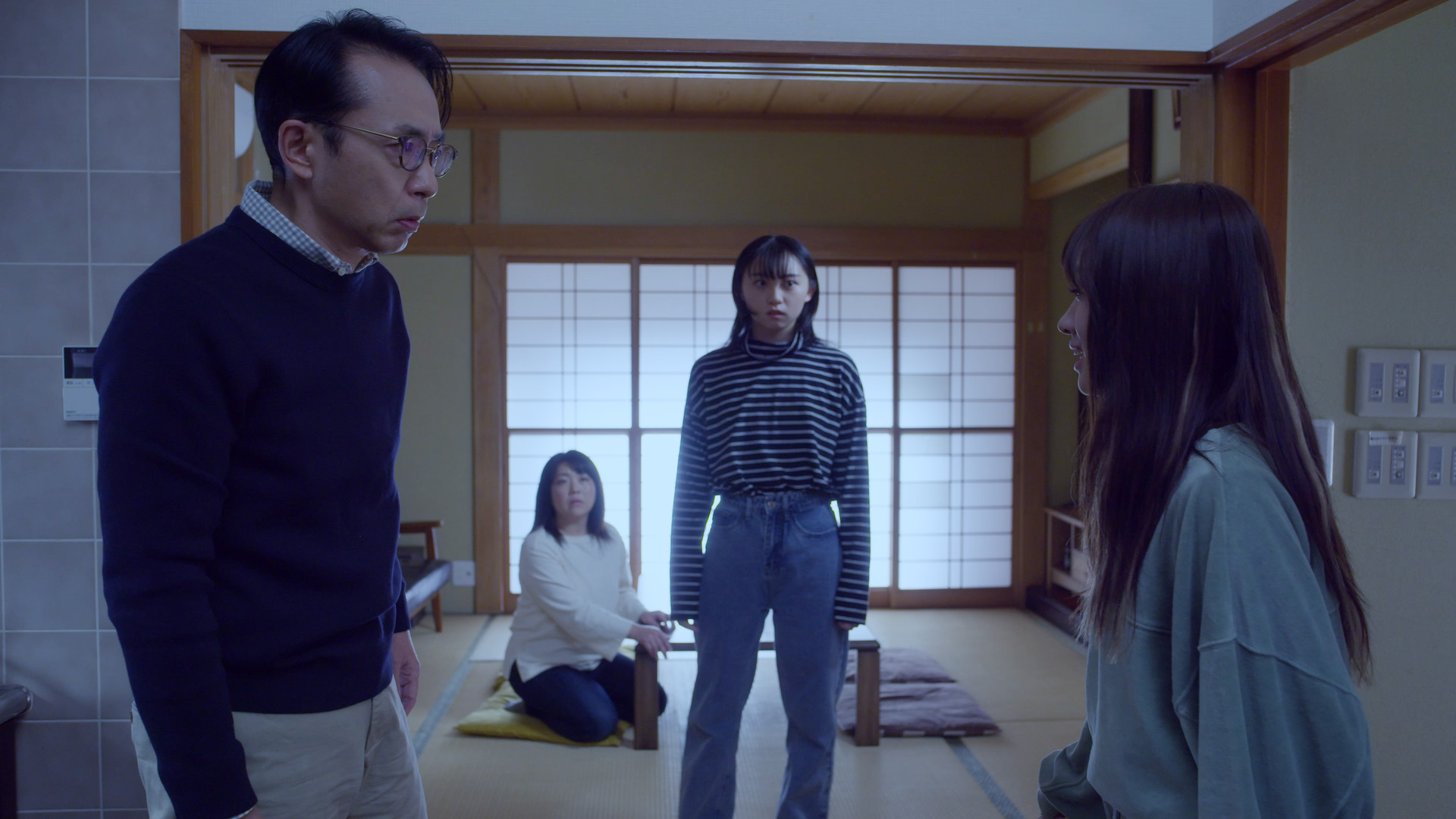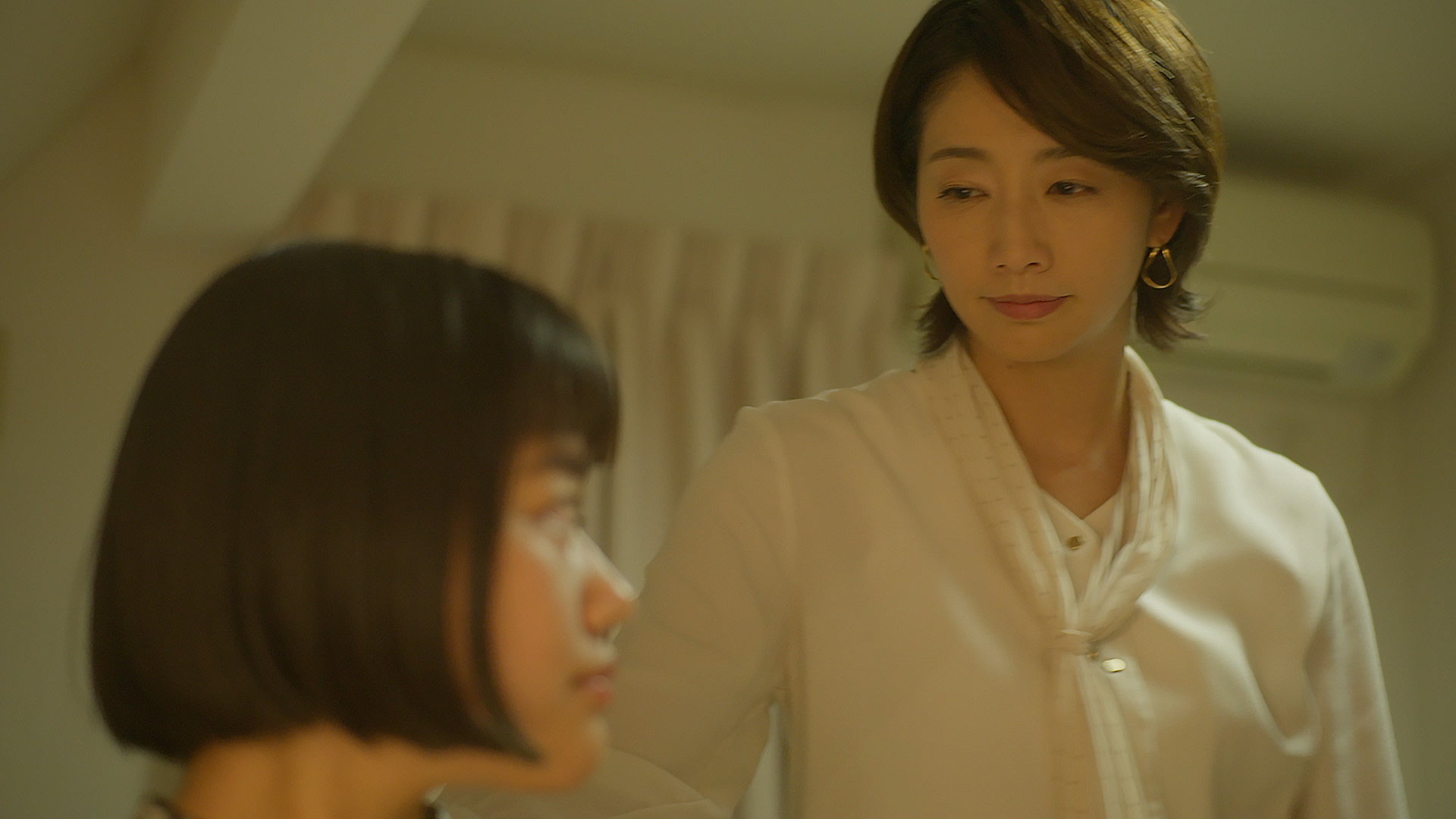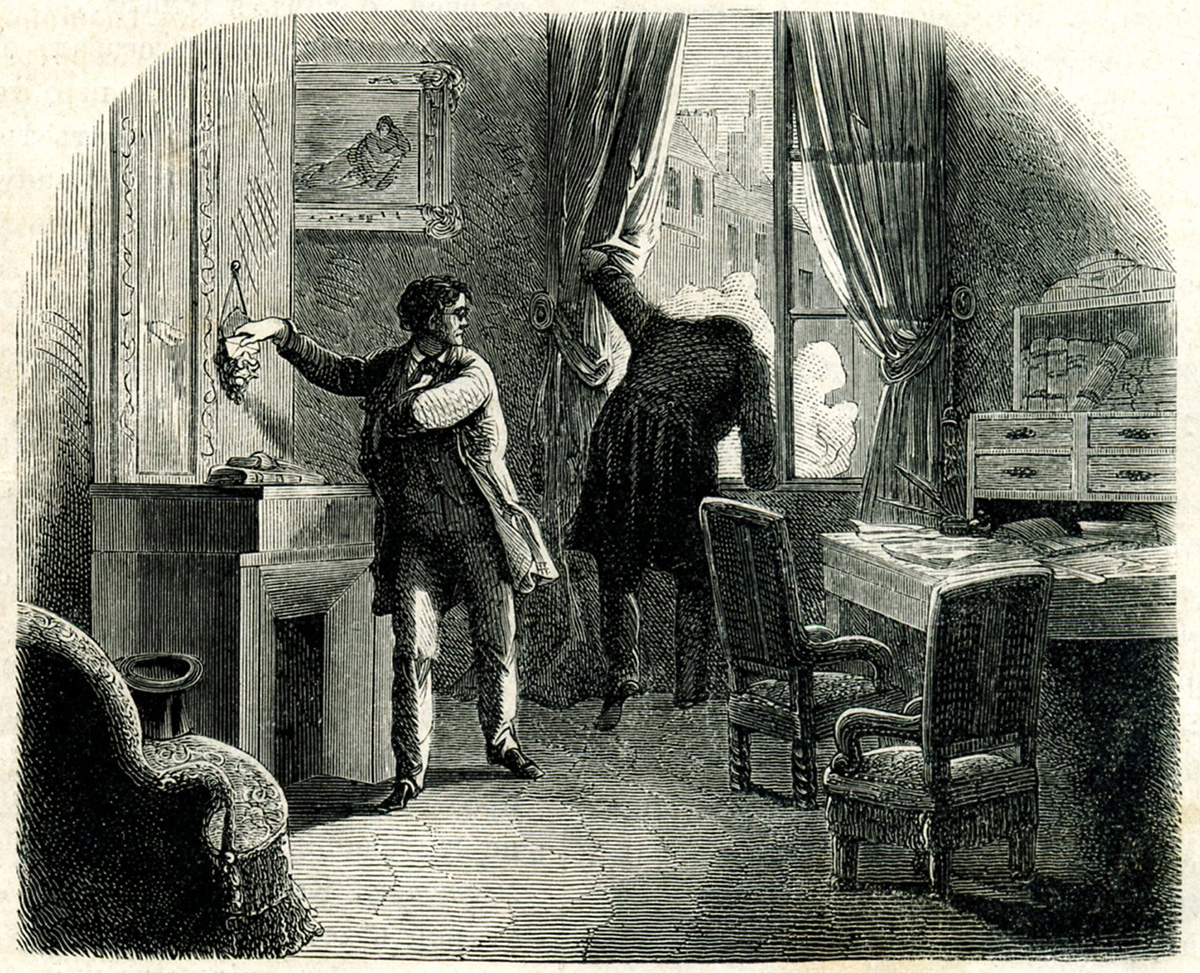Director's Statement
Documentary Film ‘Feel/Unfeel’ Director Sounosuke Kita
‘Normal Seventeen’ Unexpected Reaction
The film ‘Normal Seventeen -We Are ADHD-’ is a story based on the real experiences of Rin Kanda, who served as the main screenwriter. While the structure is simple, we aimed to depict the raw “reality” as it is.Initially, we feared the trailer—centered on shockingly explicit scenes—might be too painful for those directly affected, potentially deterring them from seeing the film.
When a collaborator posted the trailer on social media, it unexpectedly went viral, drawing numerous comments both positive and negative. While the discussion became somewhat heated, we were struck by the sheer volume of feelings surrounding “developmental disorders.”
After the Tokyo premiere, while actor fans initially made up the audience, it became clear that more attendees were individuals with developmental disorders themselves or related parties (family members, education/welfare/medical professionals), leading to many sold-out screenings.
We received numerous reactions like, “It's so real,” “This is exactly me,” and “I've done things like this too.” It was evident that many individuals with disorders were projecting their own experiences onto the film, often breaking down in tears. I believe the simplicity of the story makes it easy for viewers to project themselves onto it. Many individuals with disorders became frequent repeat viewers, with some seeing it over ten times.
Even after the initial theatrical run in various cities concluded, screenings continued to spread through independent showings organized by healthcare, education, welfare professionals, and support group leaders. It will soon be two years since its release. We still receive inquiries about independent screenings, and we are profoundly grateful.
The Hidden “Reality”
Seeing the reactions at screenings across Japan made me realize just how “real” this film is—far more than I had anticipated.Even scenes where I wondered, “Was that direction too much?” turned out not to be excessive at all. In fact, there are countless realities far worse than that.
The frustration toward one's own child who “can't do it” manifests as harsh words and violence—scenes that many ‘ordinary people’ have only seen in dramas or movies are, in fact, happening in reality far more often than we realize. What was once hidden as a “family shame” through physical isolatio, like confinement in a room (it’s said Zashiki-Rou prison), has actually continued until very recently—no, it's still happening now. It's just not coming to light.
This film has a simple structure, yet it's incredibly “real,” which is probably why it's resonated so deeply. It portrays things that have been ‘hidden’ or “rarely seen” before, exactly as they are. That's precisely why it's so real—and scary—yet compelling enough to watch repeatedly. Perhaps it's a way to process and transcend these feelings.
Initially, I thought this might be a situation particularly prominent in Japan and East Asia, where “cooperation” is highly valued.
However, after people overseas watched it too, I realized the situation isn't that different in other countries either.
Even in Western societies that emphasize the “individual” and have advanced “diversity,” once you get inside the “family,” the situation often isn't much different from Japan.
 | 
|
“Not Feeling (Unfeeling)” or “Not Trying to Feel”
However, there were certainly those who said they “felt nothing.”While people naturally have preferences about works, this didn't seem to fall into that category.
The impression was that they saw the simple story structure as nothing more than “template-like symbols.” Excessive emotional expression was perceived as ‘unrealistic’ or “a formulaic pattern found in manufactured dramas and movies.”
Before working on this project, I'd written three complex Time-Loop movie scripts. The main task was fitting everything together like a puzzle—a “rational process” that felt increasingly detached from “real people.”
To depict “reality,” let's strip away the unnecessary “brain.” Let's embed the very theme of this work—”What is Normal?”—within a simple structure (i.e., what has been taken for granted until now). It's about “sowing the seeds of realization” that the story (life) of “commonplace normality” was, in fact, not ordinary at all.
During the Tokyo release, a review in Uplink's media outlet “DICE+” captured this well:
> ‘Throughout the film, beautiful cityscapes where suburbs and urban areas coexist in perfect harmony are constantly shown. (...) Perhaps the difficulty of living lurks within these quiet, beautiful streets. When you think about it that way, it's a frightening landscape.’
But not noticing is what's truly frightening.
Because the story is simple, people perceive it only as a pre-established “template” and reject it, claiming there is “nothing” to analyze or contemplate.
In the modern era, we've lost real “bodily sensation,” reduced to only “brain-first” thinking characteristic of the ‘Age of the Wind’ – analyzing, interpreting, speculating, and gaining insight into “foreshadowing and payoff,” “lies someone is telling,” and “lengthy explanations.”
Dr. Takeshi Yoro described this phenomenon as “Cerebralization” (the tendency to overemphasize thought over other senses) over 20 years ago. Yet today, represented by social media, this “Cerebralization” only accelerates.
Even works following the pattern of Akira Kurosawa's ‘Ikiru’ (discovering life's meaning with limited time left) have become template businesses.
The people mentioned earlier are sensitive to such trends, which may be why they distance themselves even further from the “authentic human experience.”

Edgar Allan Poe's “The Purloined Letter”
resembles this situation
(Image: Illustration by Frederic Ricks)
A society that “looks away, ” “pretends not to notice, ” and “feel nothing”
Society urges us to value “diversity.”Openly discriminating can spark outrage and even legal punishment.
So, for safety, we choose to 'look away.'
Even when sitting in priority seats on trains or buses, if an elderly person or someone with a disability approaches, you can just pretend to be asleep and “pretend not to notice.” If, by any chance, you're called out, saying “I didn't notice” will suffice.
“Not noticing” is best. Above all, by building a wall through ‘not feeling,’ you can protect your own safety.
Even when pointing out technical aspects of a work unrelated to its core message, when it comes to the crucial “human life” element, they either “don't feel it,” “pretend not to feel it,” or simply pretend it “didn't happen.”
Is this genuine indifference, or is it intentional (or unconscious) avoidance?
This state of ‘not feeling’ or ‘refusing to feel’ feels like the ‘quiet division’ created by those who avoid minorities, including those with developmental disorders.
If they were merely avoiding involvement, it might not be harmful.
The problem lies in the act of seeing yet ignoring, or treating them as nonexistent—that very “gaze” and “rephrasing.” Isn't this the foundation of the ‘normal’ that they want to believe should be ‘correct’?

Protecting oneself by “trying not to feel”
Can we achieve “(habitat) segregation”?
‘Coexistence’ means “segregation”; people with different values don't need to force themselves to live together in the same place. If we could achieve that “segregation,” it would be fine, but now even those small “nests” are being threatened with extinction.Back in the post-WWII era in Japan, someone who was an elementary school student at the time learned that “special classes” were being created (now softened to “special support classes”).
Apparently, everyone started feeling uneasy. Ultimately, “friends who were a bit different” were placed there, and they rarely saw the friends afterward.
What had been merely “a bit different” became “special,” and this experience remained deeply etched in his memory.
“Distinguishing” divides the human heart.
People with developmental disorders are often said to be “unable to read the room” (unable to sense the atmosphere).
However, this stems from brain function issues, leading to situations where they unintentionally cause trouble despite not wanting to.
On the other hand, typical development people also include those who “can't read the room” (don't sense the atmosphere).
While individual cases may vary, most likely do so for “selfish” reasons.
Many people view the former group through the negative lens of the latter.
The Japanese Buddhist monk Shinran taught that it is the “Akunin (wicked)” who are saved.
Here, “Akunin” does not mean those who commit evil deeds, but rather those who are conscious of their own delusions and desires, those capable of introspection.
The difference lies between someone who thinks “I don't want to cause trouble for others” yet still ends up doing so, and someone who causes trouble without a second thought (intentionally). The former is the “Akunin.”
Isn't this “Akunin” precisely the one who should be saved?
In my film “Normal Seventeen”, we see characters reminiscent of the working-class folks from Yoji Yamada’s movie series “It's Tough Being a Man” (Tora-san). They maintain a “just right” distance with others—neither too close nor too distant. They neither overstep nor ignore. This was also a standard pattern in old-school Japanese human drama films and TV dramas.
This “just right” distance creates a sense of coexistence (mutual accommodation).
They are unaware of the protagonist’s (Tora-san’s) developmental disorders, and even if they knew, they would treat him as he is. They haven't become “Cerebralization”; they live grounded lives.
That's why they can coexist with Tora-san, who clearly has developmental disorders. They know Tora-san, who causes trouble for others, “has no ill will” and “isn't selfish.” Tora-san is “a bit of an oddball and quick to fight, but a good person with no malice,” so it's okay to have him around at a certain distance. Tora-san knows himself, so he avoids getting too close to people. When he causes trouble, he reflects and even sets off on journeys.
However, today's “Cerebralization” people would likely just label Tora-san as a “troublemaker,” sparking online outrage and condemning him.
I believe these “old town-style people” hold the key to “coexistence.”
People who can step in and say “Now, now” to break up a fight. This is difficult to achieve through text alone online. These are the “cool people” who have actual “bodies,” who reach out and say “Now, now.”
Nowadays, people would likely judge who “won the argument” and just fuel the division further.
That's precisely why I used Tora-san, the “eternal one-pattern.”

Hints of “Coexistence” in the Patterns of Japan's Formerly Popular Human-Interest Films
Image from “Tokyo Story” (directed by Yasujirō Ozu)
Documentary Film ‘Feel/Unfeel’
Some people possess hypersensitivity to sound and light. Conversely, others have dulled sensory perception. When such sensory traits coexist with developmental disorders, life becomes increasingly difficult.“Normal People” likely struggle to imagine this. They assume someone walking with headphones is listening to music, rarely considering it might be to block out noise.
And then there's a society that quietly divides itself, either “not feeling” developmental disorders, “trying not to feel” them, or “not noticing” them.
The film ‘Feel/Unfeel’ is a documentary film project centered on the themes of “feeling” and “not feeling (unfeeling),” highlighting societal issues surrounding developmental disorders.
Clear divisions are advancing worldwide.
And behind the scenes, a ‘quiet division’ seems to be accelerating it.
A society that has become ‘top-heavy’ and lost its body resembles an AI incapable of feeling.
No, even AI is beginning to incorporate ‘sensory’ functions.
Will humans and AI simply swap places like this?
Humanity's destination might be a world like the movie ‘The Matrix’, trapped within the brain.
'Skin and Brain Share the Same Origin' – During the early stages of a fertilized egg's division, both skin and brain develop from the same layer called the ‘ectoderm’. Skin and brain are thought to be closely connected.
The brain and nervous system are interconnected. It seems the ‘brain’ doesn't control the body alone; the skin, sometimes called the ‘third brain’, also plays a role. Not merely as a subordinate sensor.
Neurodiversity – From the perspective of “neurological diversity,” where brain and nerve structures differ individually, “developmental disorders” might be manifestations where the body compensates despite brain function issues.
The common theme in all my works is ‘How Humans Live’.
For both those with developmental disorders and those who have become ‘Cerebralization’, the challenge is perhaps to become ‘Now, now’ and return to the ‘moderate human world’. (The same applies to other minorities.)
I chose the fiction format for ‘Normal Seventeen’ to serve as a gateway for more people to understand the realities surrounding developmental disorders.
For ‘Feel/Unfeel’, I opted for a documentary format to reflect the unimaginably harsh realities and challenges beyond narrative, aiming to prompt more people to ‘feel’ and ‘think’. I have begun interviewing numerous individuals both domestically and internationally.
We sincerely hope many will resonate with this project's intent and support its production.
September 23, 2025, Autumn Equinox
Director: Sounosuke Kita
|
Don’t think, feel! It is like a finger pointing away to the moon. Don’t concentrate on the finger, or you will miss all the heavenly glory. Bruce Lee “Enter The Dragon” |
北 宗羽介 Sounosuke Kita
Born in 1970. Film producer and director. Drew manga from childhood and eventually became engrossed in sci-fi and action films. Engaged in independent filmmaking and theater activities during his student years. After working at some advertising agencies, he started his own business. While involved in advertising production and IT-related work, he also produced and distributed independent films and provided filming support for foreign productions. He has developed a unique film production and distribution model centered on “international co-productions.” Meanwhile, to pursue “the beauty of Japan's spiritual culture,” he founded the all-female samurai performance action team “RIN-PA,” expanding its activities both domestically and internationally.
Films include: ‘Normal Seventeen -We are ADHD-’ (2023 / Director, Co-Writer, Producer), ‘First Love’ (Director: Takashi Miike / 2019 / Production Committee Member), ‘The Sower of Self-Government’ (2013 / Director, Producer / Documentary) among others.
Documentary Film ‘Feel/Unfeel -Developmental Disorders and Japan-’(Working Title)
Documentary / Approx. 90 min. / Scheduled for release in Spring 2026 / Scheduled for international film festival participation
Director, Screenwriter, Producer:Sounosuke Kita Production and Distributor :HACHIEN LLC.